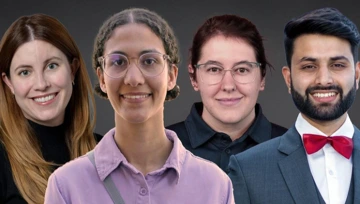
Graduate Programs
Biomedical Engineering at the UA Knows No Bounds
This highly interdisciplinary program at a top-tier research institution is an ideal choice if you are seeking a collaborative environment tailored to your interests and career goals.
More than 50 esteemed faculty, many of whom have multiple appointments in the colleges of engineering, medicine and science, specialize in areas ranging from cardiology to medical imaging.
Join University of Arizona biomedical engineering!
Questions? For more information on the UA BME graduate program contact Andrea Anduaga at aanduaga@arizona.edu.
Request Information
Program Highlights
- Interdisciplinary mentoring and flexible curriculum
- Integrated with top-tier UA medical school and hospital
- Full doctoral student funding
- Access to Tech Launch Arizona, the UA’s highly successful commercial arm
- Ideal student life with year-round outdoor activities and thriving downtown nightlife
Versatile Research
Focus areas include:
- Biomedical imaging and spectroscopy
- Biomedical informatics
- Bioinstrumentation and devices
- Biomaterials and tissue engineering
- Biomechanics
- Biosensors
- Cardiovascular biomedical engineering
- Neuroengineering
- Nanomedicine
Student in the Spotlight

Minds helping minds
Biomedical engineering graduate student Rhea Carlson is using MRIs to track the progression of brain disorders. This research into molecular waste from neuron activity may help scientists better diagnose and treat life-threatening diseases
"This research has implications for understanding diseases that are characterized by the accumulation of proteins in the brain, such as Alzheimer’s Disease or Parkinson’s Disease. I hope that it can help build the foundation to better understand these diseases."
Rankings
19th
R&D ranking, public universities
(National Science Foundation)
9+
research centers and labs
#16
best biomedical engineering graduate program, public schools ranking
(U.S. News & World Report)
